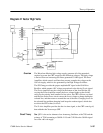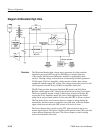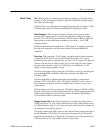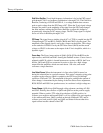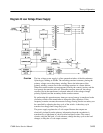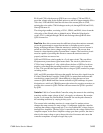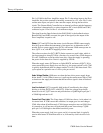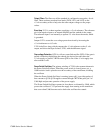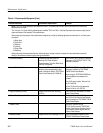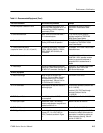
Theory of Operation
1780R-Series Service Manual
3–115
R140, and C240, which protects Q250 from over-voltage. C240 and CR141
arrest the voltage spike on the flyback pulse at a safe level (approximately 650 to
700 volts). L240 and R140 limit the rise time of the current pulse in C240,
quieting the noise spike. C240 discharges each cycle, through CR140 and L140,
when Q250 turns on.
The rising edge snubber, consisting of C141, CR149, and R149, slows down the
rising edge of the flyback pulse to diminish noise. When the flyback pulse
occurs, C141 is charged through CR149 and discharges through R149 when
Q250 is turned on.
Base Drive. Base drive current must be sufficient to keep the transistor saturated,
yet not be great enough to cause the transistor to dissipate excessive power
during switching transients. When the transistor is turned off, reverse current is
pulled out of the base, due to charge storage in the device. The reverse base
current is a short duration spike of greater than 1 ampere. The base drive circuit
must be capable of providing this current to ensure the transistor turns off
properly and does not run too hot.
Q450 and VR350 are wired together in a 5 volt zener circuit. They are able to
dissipate more power than a typical zener diode. The circuit is placed across
C350 to keep it charged to 5 volts, which allows the base of Q250 to be driven
negative, even though the preceding base drive circuitry can go no lower than
0 volts. This provides the negative base drive voltage to Q250, needed for proper
switching action.
Q451 and Q350 are emitter followers that amplify the base drive signal from pin
6 of the Current Mode Controller, U460. Q550 is a current limit transistor that
sets the drive current from Q451 (about 600 mA) to limit the turn-on base
current in Q250. R460 limits the current available to Q550 and keeps its power
dissipation at a safe level. CR460 bypasses the resistor for negative excursions to
provide drive current for Q350. The turn-off base current for Q250 is provided
by Q350.
Controller. U460 is a Current Mode Controller, using the current in the switching
transistor and the output voltage of the 5 volt supply as references. By monitor-
ing the 5 volt output, the Current Mode Controller can set the peak current (in
the switching transistor) by varying its duty cycle.
The current in the switching transistor is a ramp signal. Its emitter resistor
changes the ramp current to a ramp voltage. A comparator inside the controller
compares the emitter voltage ramp (pin 3) to a level-shifted DC voltage from an
internal Error Amplifier. The duty cycle is controlled by the voltage on this Error
Amplifier output. As the Error Amplifier voltage goes more positive, the time it
takes for the ramp voltage to get to that positive level increases and causes the
controller comparator to output a longer duty cycle.



